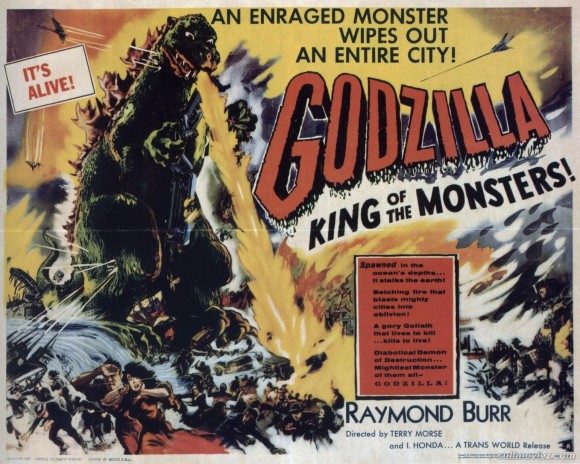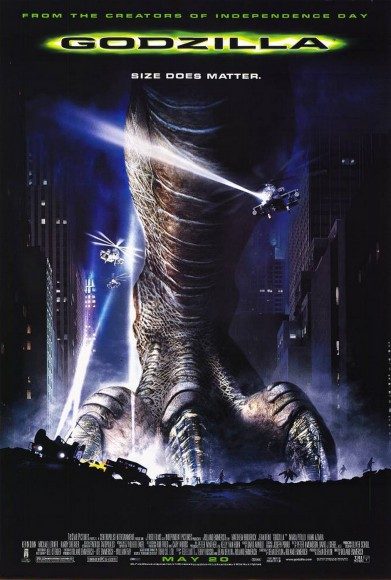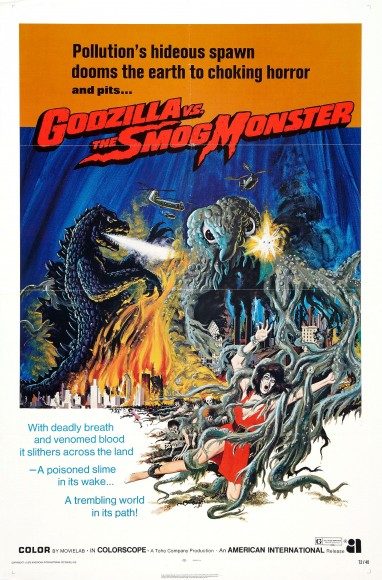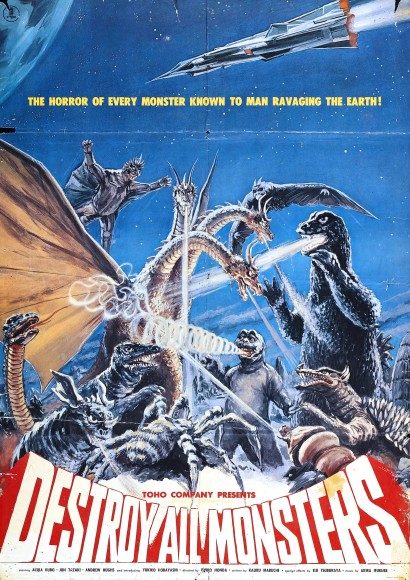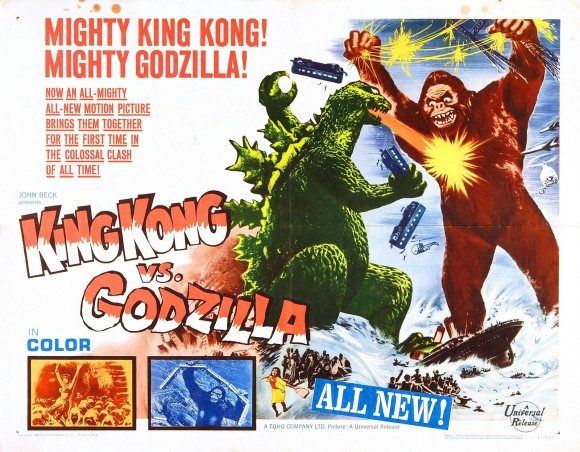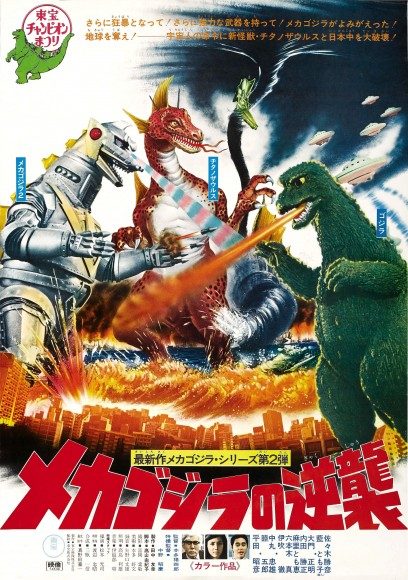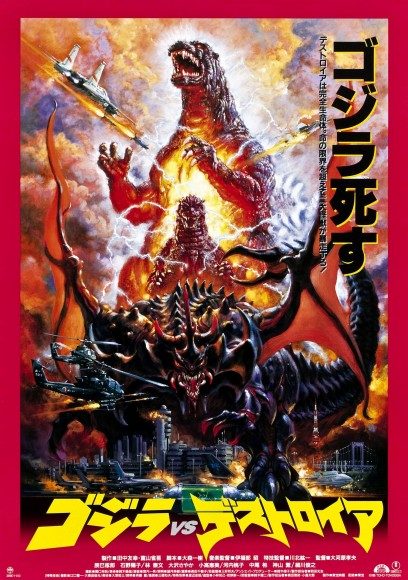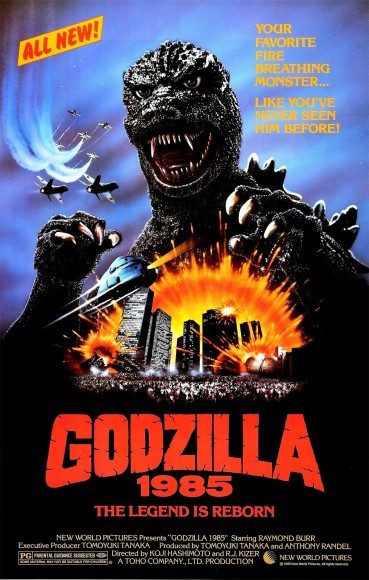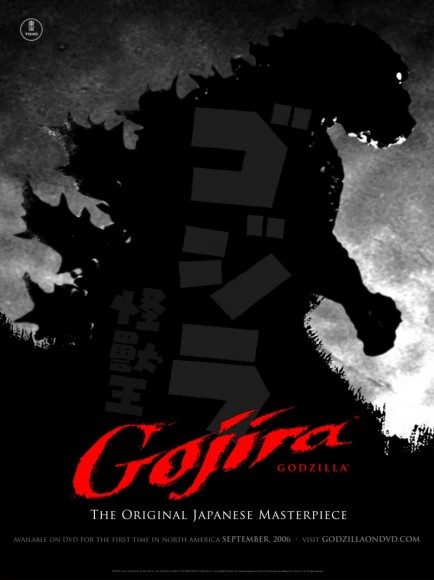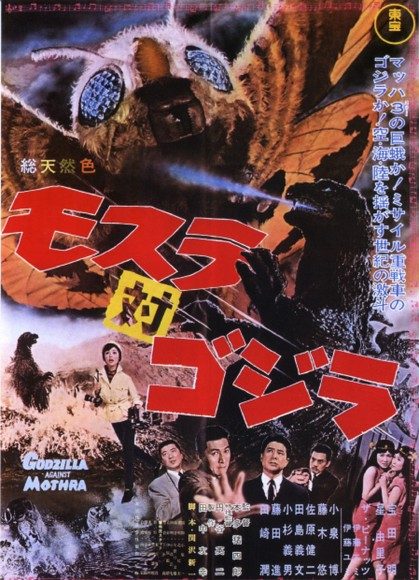The latest incarnation of Godzilla is upon us. Being the first film about the giant radioactive reptile in nearly ten years, Gareth Edwards’s take on one of the most famous – and profitable – cinematic creations of all time may hold the franchise’s future in its scaly hands. But, as we prepare for the future we must also look to the past. It’s a past that spans more than five decades, with 28 films from Japan’s Toho studios and two American productions (including the upcoming picture), not to mention TV shows, comic books, and a mountain of toys and other merchandise.
From the original 1954 classic through the films of the cartoonish Showa era (up to 1975), the darker Heisei era (1984 – 1995), and the schizophrenic Millennium era (1999 – 2004) there’s a lot to cover when talking about the Godzilla franchise. Our time (read: attention span) is limited, so let’s keep things simple today, and narrow down the 10 best films in the series.
10. Godzilla: Tokyo S.O.S. (2003)
Most of the films in the Millennium era don’t share a continuity, but Tokyo S.O.S. was a direct sequel to the previous year’s Godzilla Against Mechagodzilla. In fact it’s also meant to be a follow up to the original Godzilla and Mothra films, and throws out a few homages to Mothra vs. Godzilla – which you’ll hear about later in the list – and a more obscure giant monster film from Toho called Space Amoeba. As you may have guessed, much potential for enjoyment of this film depends on how well the audience can recognize the references; however, even if you aren’t a Godzilla buff, there’s still a lot of fun to be had. Godzilla’s frequent enemy/rival/ally Mothra and her twin fairy companions – you’ll notice as this list goes on, these films can get a little weird – are always a joy to see. The modern version of the Big G’s robotic duplicate is pretty interesting too. Originally, an alien-controlled menace, Mechagodzilla is reimagined as Kiryu, a weapon created from the bones of the first Godzilla (it makes sense in context) ready to defend mankind with more missiles than the U.S. military. The way it combines with another machine makes this the closest thing we’ve had to Godzilla vs, Power Rangers. This is just a fun movie. One last note: the ending teased what looked to be a cool sequel, but for whatever reason those plans were scrapped; instead, we got the unrelated final (so far) Japanese Godzilla film, the appropriately named Godzilla: Final Wars.
Best Moment: Kiryu smacks Godzilla so hard his scales come flying off.
9. Godzilla vs. Hedorah (1971) aka Godzilla vs. the Smog Monster
One of the strangest entries in the series – and this is a series full of alien dragons, cyborgs, alien cyborgs, alien mutants, mutant lobsters, mutant dinosaurs, undead dinosaurs, and dancing monsters – but the fun kind of strange. Godzilla vs. Hedorah is truly the Godzilla film of the seventies. It’s got an environmental message handled with the subtlety of a missile to the face (never the series’ strong suit, perhaps, but the villain here is a pile of living pollution) a trippy night club sequence where all the dancers turn into fish people – it sort of makes sense in context, but not really – and some of the most disturbing imagery in the series. Hedorah flies around spewing poison gas across the city, then we watch as the unsuspecting populace drops dead and dissolves into skeletons. Keep in mind this was in the middle of the Showa era, when the Godzilla films were being made more for children than adults. If you can accept the film’s oddness, it’s a good watch with some interesting monster-on-monster fights – again, pile of living pollution – and some well-done horror elements.
Best Moment: Godzilla uses his flame breath to launch himself through the air. Godzilla: hero, villain, monster, rocket ship.
8. Destroy All Monsters (1968)
This film was pretty impressive for the time it came out. Hell, it’s still impressive. Okay, the plot is nothing special: aliens come to take over the world by controlling monsters. But they don’t control one or two monsters, they control eleven. And these weren’t just throwaway creatures; no, they were all from past Toho films, including Godzilla, Rodan, Mothra, Varan, and Baragon. They weren’t all from Godzilla films, either. It gave the sense that maybe Toho had a shared universe – which means Tokyo has been destroyed an ungodly number of times. In a weird way, this was kind of the Avengers of its day. Sure the non-monster aspects of the plot drag a bit, as they tend to do in any giant monster movie, but there are some truly epic levels of destruction to witness as the monsters stomp on cities all over the world. It all leads to a great finale as the all the earth monsters – free from the aliens’ control – team up to take on the golden space dragon, Ghidorah.
Best Moment: A movie like this has a lot, but few sights can compare to the shot of Godzilla and his monster pals standing side by side.
7. King Kong vs. Godzilla (1962)
You know, it’s hard to believe this even happened. Two very different characters from two very different films made in two very different countries were put together in a film that’s not only very entertaining, but also very respectful of both franchises. The American and Japanese monsters were both given adequate screen time, and one never upstaged the other. That time was used to develop the characters so they were distinct not only in appearance but in personality and abilities – though I still don’t completely understand how King Kong acquired lightning powers. Other crossover films *cough* Alien vs. Predator *cough* films could learn a bit from King Kong vs. Godzilla. It helped that Ishiro Honda – the franchise’s first and best director – was at the helm. For this film to work, it needed – and got – someone who had respect for both title characters. Also, the filmmakers made the ballsy move of giving the fight a clear winner *cough* Freddy vs. Jason *cough* (I’m not spoiling who).
Best Moment: King Kong has had enough of Godzilla’s fire-breath crap, so he yanks a tree out of the ground and shoves it down the Big G’s throat.
6. Ghidorah, the Three-Headed Monster (1964)
This movie marked so many firsts for the series. It was the first appearance of King Ghidorah – what he’s the king of is never made clear – one of Godzilla’s most powerful and most frequent foes (he would go on to appear in six other films). It was the second time multiple monsters from preexisting Toho films would appear with Godzilla – in this case the temperamental bird-dinosaur Rodan, and the kindly insectoid Mothra. It was the first time Godzilla teamed up with other monsters – teamed up with, not fought. It was also the first time the Big G was cast as a defender of the Earth. Sure, the later Destroy All Monsters had bigger scale battles, but the smaller three-on-one beatdown Rodan, Mothra, and Godzilla deliver to Ghidorah just has more charm to it.
Best Moment: Mothra, Godzilla, and Rodan are having an argument and Mothra’s twin fairy companions are nice enough to translate their roars, growls, and chirps for the humans’ (read: audience’s) benefit.
5. Terror of Mechagodzilla (1975)
Unquestionably the most mature entry in the post-original-Gojira Showa era. Sure Destroyah was more gruesome and horrific, but Terror of Mechagodzilla had much more emotional substance. For instance, the human plots were quite memorable – in many of these films they can feel like mere filler until we get to the humongous monster fights. The tragic love story between a man and a cyborg girl – this is still 70s era Godzilla – is just that: tragic, and surprisingly free of emotional punch-pulling. Speaking of tragedy, the titular Mechagodzilla’s co-baddie Titanosaurus might be the saddest giant monster since the original King Kong. Essentially a dead dinosaur that’s been resurrected and mind controlled by aliens – the M.O. of every extraterrestrial in the Showa era – its defeat at the hands of Godzilla isn’t played as a moment of triumph, just as some unfortunate circumstance. Then there’s the Big G himself. Gone were the days of Godzilla flying, dancing, and talking – I’m not kidding; check out Godzilla vs. Gigan – back were the days of Godzilla being, you know, threatening. Sure, he’s still beating the bad guys, but more for self-preservation than out of an obligation as humanity’s protector. This was a great bridge between the cartoonish Showa era and the darker Heisei era; though fans would have to wait nine years for it to begin.
Best Moment: Godzilla rips off Mechgodzilla’s head, destroying his robotic duplicate like he did in Godzilla vs. Mechagodzilla…right? Wrong! Mech’s got a laser-beam-shooting second head underneath.
4. Godzilla vs. Destroyah (1995)
Another era-ender; Godzilla vs. Destroyah pulled out all the stops to give the Heisei period one hell of a conclusion. “How was this accomplished?” you may ask. The answer is simple: kill Godzilla. Not ambiguously where he’s buried in a volcano, or some other situation he could return from. D-E-A-D. To help make this scenario believable – the Big G had survived a psychic space clone of himself by this point – we got Destroyah. Destroyah, one of the coolest looking monsters ever put on film – think a crab crossed with a bat, crossed with Satan – was born from the Oxygen Destroyer bomb that killed the original Godzilla. The final battle between the Big G and the Big D is something to behold, one of the most brutal and spectacular in the whole series; you really get the sense of Godzilla fighting for his life and for revenge – watch the movie for context. The final moments between Godzilla and his son – yes, Godzilla had a son, and it was done well in the Heisei era – can make even the most jaded giant monster movie fan (like this author) misty eyed. Like Terror of Mechagodzilla, it was a fitting end to an era.
Best Moment: The end credits, imposed over scenes from the past movies, and set to series composer Akira Ifukube’s stirring score tugs at the nostalgia chord.
3. The Return of Godzilla (1984) aka Godzilla 1985
What could be better than the end of an era? The beginning of a new one. This was the start of the Heisei era, and after nine years of resting Godzilla was back with a vengeance. Return of Godzilla took the entire Showa series out of continuity, instead billing itself as a direct sequel to the original film. And it really does feel like a sequel to Gojira, taking a more realistic approach to the situation – as realistic as you can get in a film about a radioactive dinosaur. The giant monster’s return sparks an international incident between the U.S. and the U.S.S.R. – remember, this is the mid 80s – nearly starting World War III. Once again, Godzilla is an allusion to atomic bomb, but now in the time of the Cold War. Much like in Terror of Mechagodzilla, the title character is no joke, he’s a threat to human kind. Yet the film makes it clear the experiments of man that created Godzilla are the real villains here, not the monster himself. Of all the Godzilla films Return feels the most like a successor to the original.
BestMoment: Right before his attack on Tokyo, Godzilla rises from the sea like an Old God out of Lovecraft. The lighting, the music, the camerawork, and the costume design set the mood and tell you one thing: run.
2. Gojira (1954) aka Godzilla
Consider this the Maltese Falcon of giant monster (or, daikaiju) films. No, it wasn’t the first of its kind, but it did set many standards for the genre. It showed the world giant monsters were good for more than just thrills – they could embody difficult human issues. Godzilla was the atomic bomb given flesh, a terrifying unknown force that leveled Japan’s cities and killed its people. It probably helped that director Ishiro Honda was a World War II veteran, and not long before the film’s release an incident occurred where a Japanese fishing ship was hit by nuclear radiation from an American nuclear test. Sure, a lot of the effects might seem a bit cheesy and parody worthy by today’s standards (and I’m not saying they aren’t) but as with any classic movie monster – like Dracula, Frankenstein’s Monster, and of course King Kong – if you’re willing to suspend your disbelief and go along with the story, Godzilla can still be a stirring experience.
Best Moment: Dr. Serizawa, the inventor of the Oxygen Destroyer, is torn about the idea of revealing his weapon to an untrustworthy world. Then he looks at the TV; there are images of ravaged cities and injured or dying people set against the singing of a children’s choir. Serizawa decides to do whatever it takes to end the atomic monster.
1. Mothra vs. Godzilla (1964) aka Godzilla vs. the Thing
This was the first film in the series to feature a monster from another Toho film. But that’s not why it’s number one on this list. It’s number one because if I could only show someone a single Godzilla film, this would be it. Although it was only the fourth film in the Godzilla franchise, it had plenty of the elements that permeated the entire series. It had humans fighting against Godzilla – and thinking strategically about how to bring him down, not just throwing waves upon waves of missiles and gunfire at him – and Godzilla fighting against other monsters – Mothra and her two offspring. The human storyline dealt with the follies of greed and man’s arrogance towards nature – themes which the 2014 American film seems to be adopting. It also portrayed Godzilla in (what I think is) the best way: he was the antagonist, but he wasn’t evil; he was a confused, angry animal crashing – he literally crashes into buildings by accident – through an unfamiliar world. Whenever Godzilla is handled this way it works because it allows the audience to root both for and against him. It should come as not surprise that this was another Ishiro Honda project – he also directed the original Mothra film in 1961 – and he was in top form here, bringing memorable characters, fun stories, and monsters with a lot of character to life. To reiterate, if you’re going to watch any Godzilla film, any giant monster film, make it Mothra vs. Godzilla.
Best Moment: The human villain, Torahata has just killed his partner, and now, as Godzilla approaches, he tries to gather up all of the money they stole (clearly the guy’s got his priorities straight). Then, like an indifferent deity, the Big G just walks right through the building Torahata’s in – killing the insignificant speck, of course – without a second thought.
Did I get this list completely wrong? Prove it with a list of your own.

